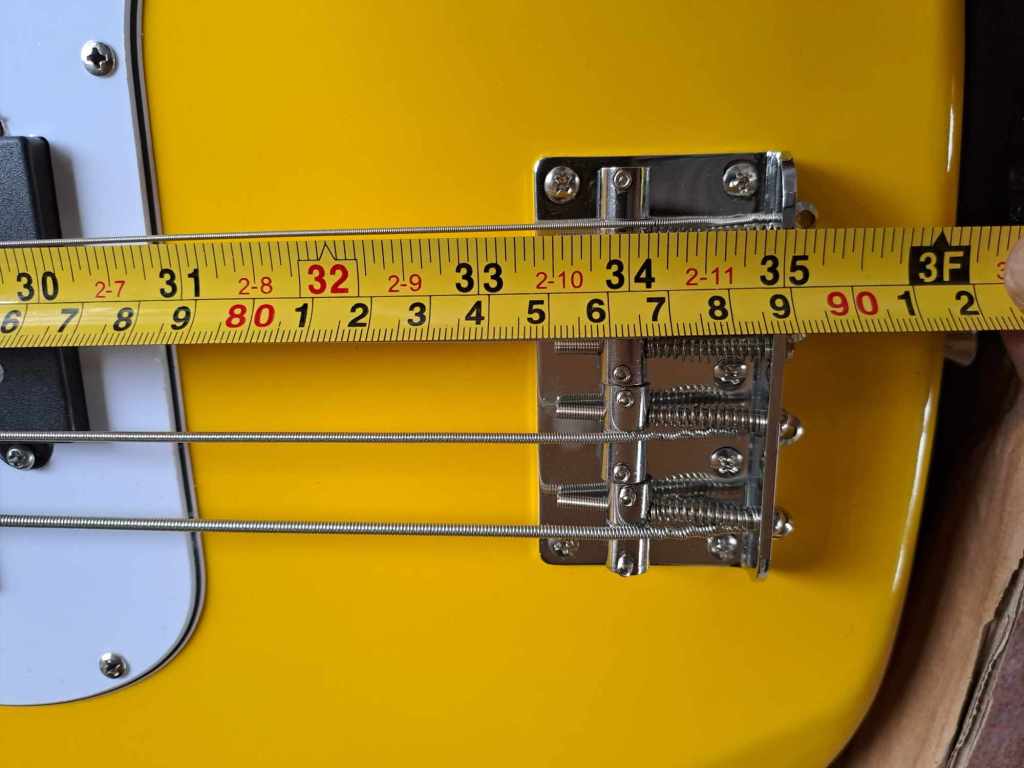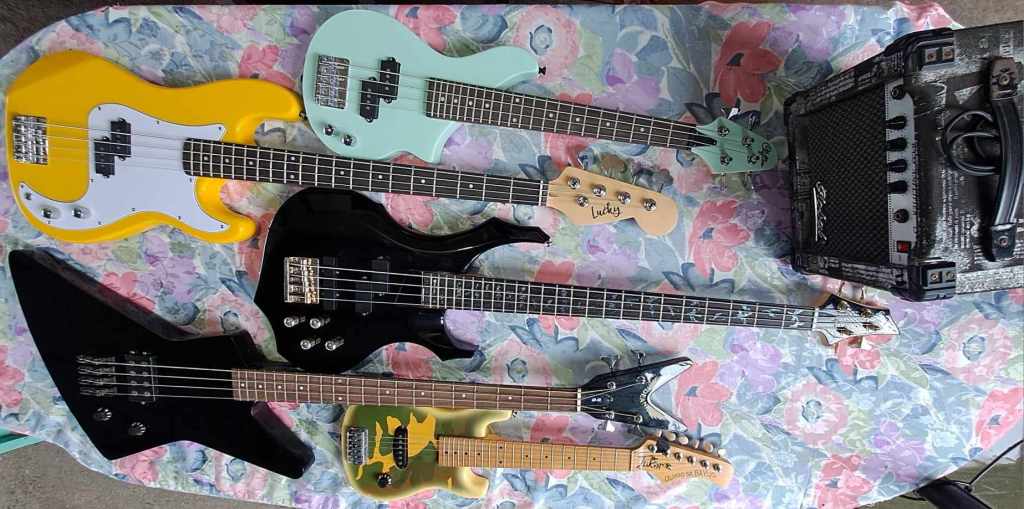Fundamental premise
Manufacturing of high-quality end products concerning OEM’s of musical instruments and their suppliers that offer features like defect-free components that offer great sound quality, playability, and value cannot be built cost effectively from low-quality components. It has always been that fundamental premise of manufacturing to ensure quality control.1
There are a variety of reasons why people tend to buy cheap or budget-friendly products, they tend to buy what they can afford, and it’s not because people cannot afford to buy expensive products but maybe it’s just a matter of cost-saving,
So when it comes to musical instruments like purchasing that bass guitar (or electric guitar), the question sometimes is, is it better to buy cheap or quality? Or is it possible to have the best quality at the cheapest price?
Well, as a higher price doesn’t always indicate better quality, and most often cheap items are often made of low-quality materials.
And whether or not you are a beginner, intermediate, or an advance player, sometimes the question is not always whether you are getting your money’s worth.
But sometimes the real question is, is the instrument playable? And can you use it to your advantage and benefit from it.
Positivity
So due to budget constraints with nothing else in mind but spending less to get another bass, picking a yellow one for positivity, we decided to buy the cheapest brand new bass we found on the net.
All right!
So, we’ve decided, we just liked the color anyway, so we just bought this cheap P-bass thinking that it seemed like a great way also for us to save money.
Saving up and buying something expensive that last longer may be well worth it in the long run than buying cheap items that may last only awhile.
But buying cheap sometimes is not always buying value, and being low cost doesn’t necessarily mean it can’t be of high value. Will this be worth our money? Let’s just see what we’ll get.
It came, it finally came.
And nothing gives one more joy and excitement when ones package finally comes in the mail. So it came, it finally came.
Got it cheap all right, but will it last for a long period of time? Will it carry on for many years? Nah, let’s just unbox it and check it out.
No nicks and scratches, no paint chips, dents or dings on the body and head stock, this bass was packed properly, all is good, except for that one dent behind the neck, but clearly not a result of damage during shipment.
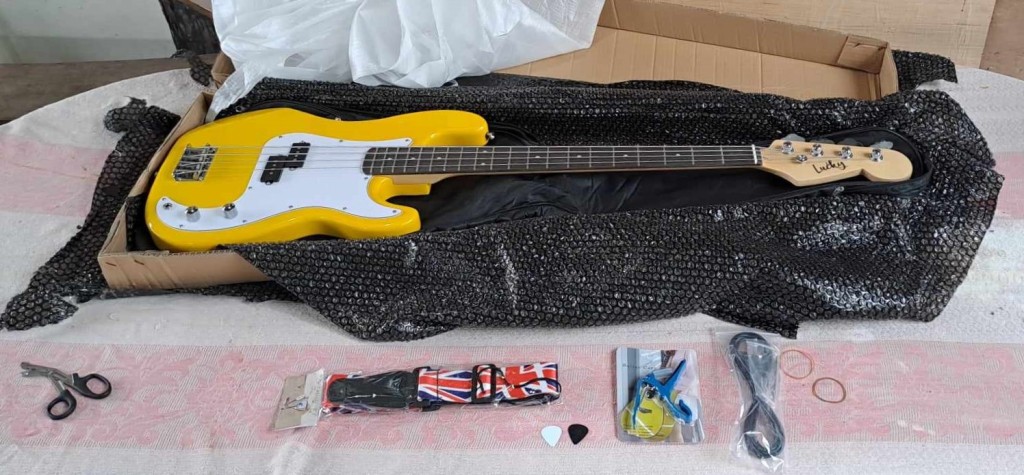
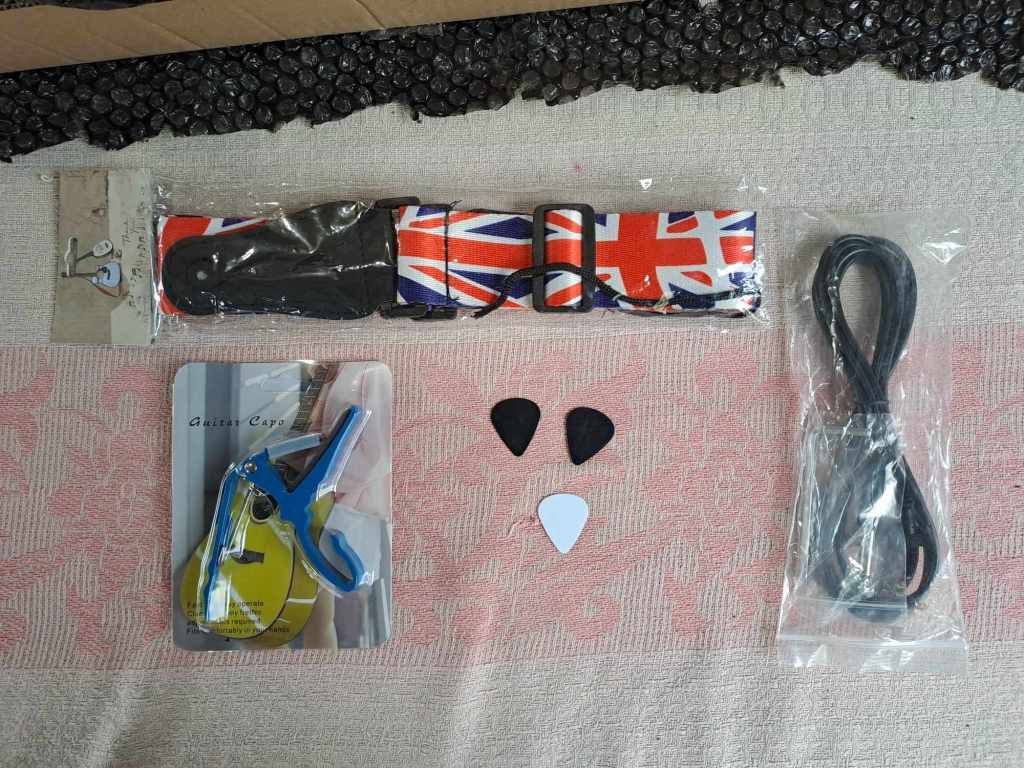
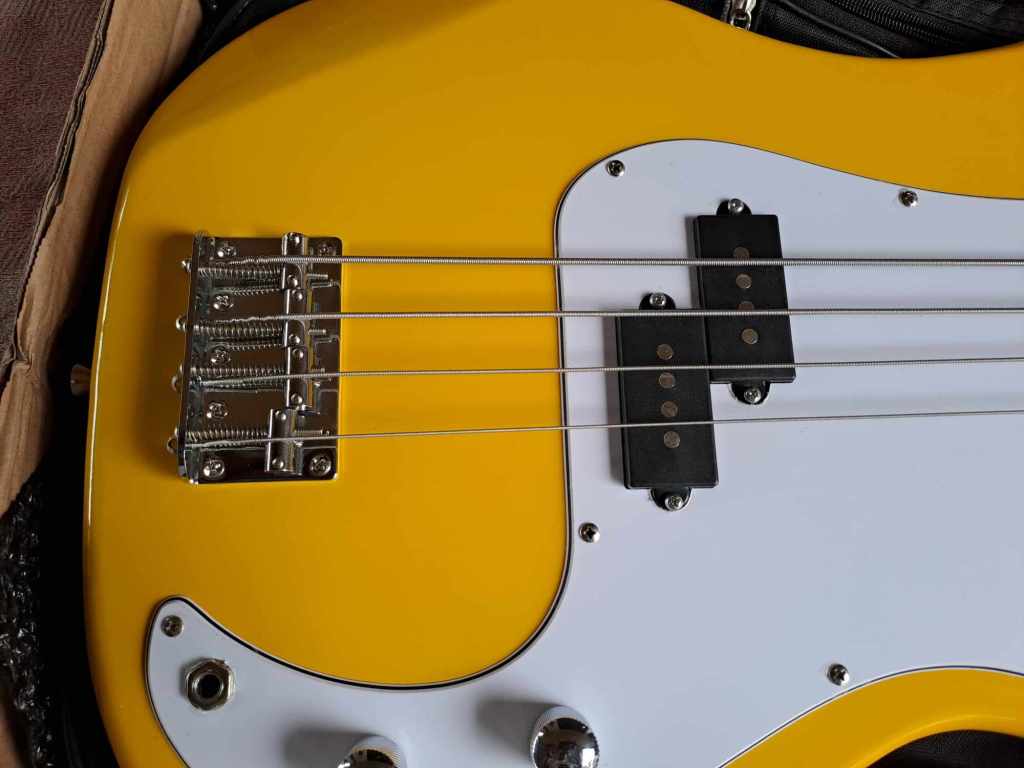

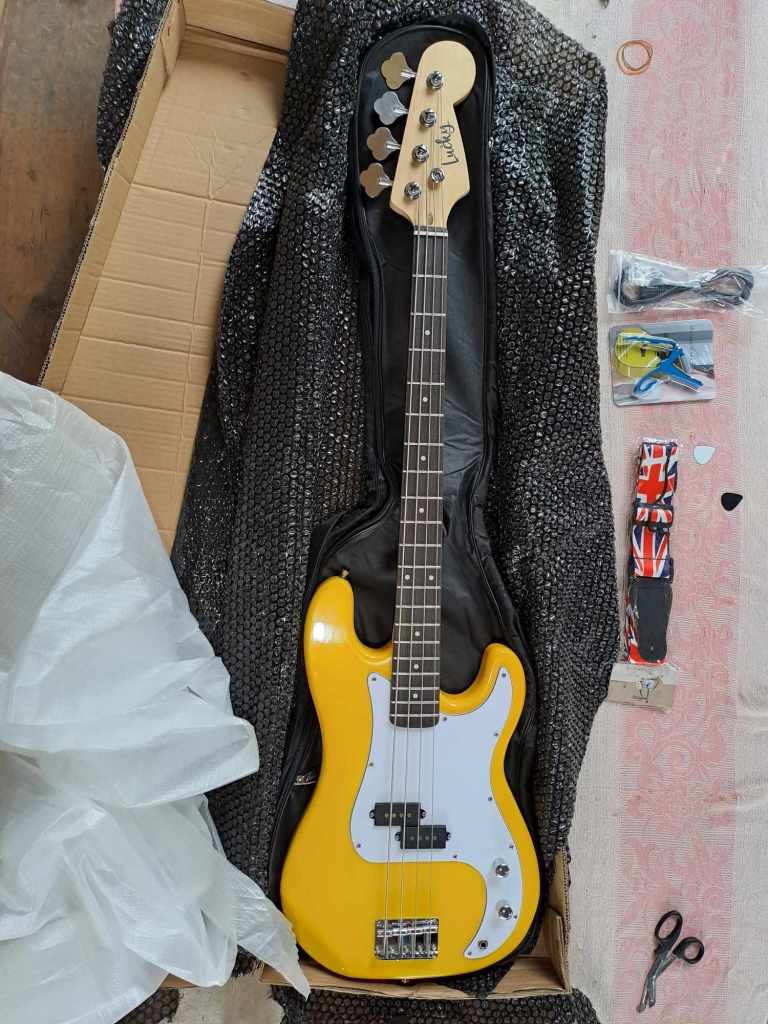
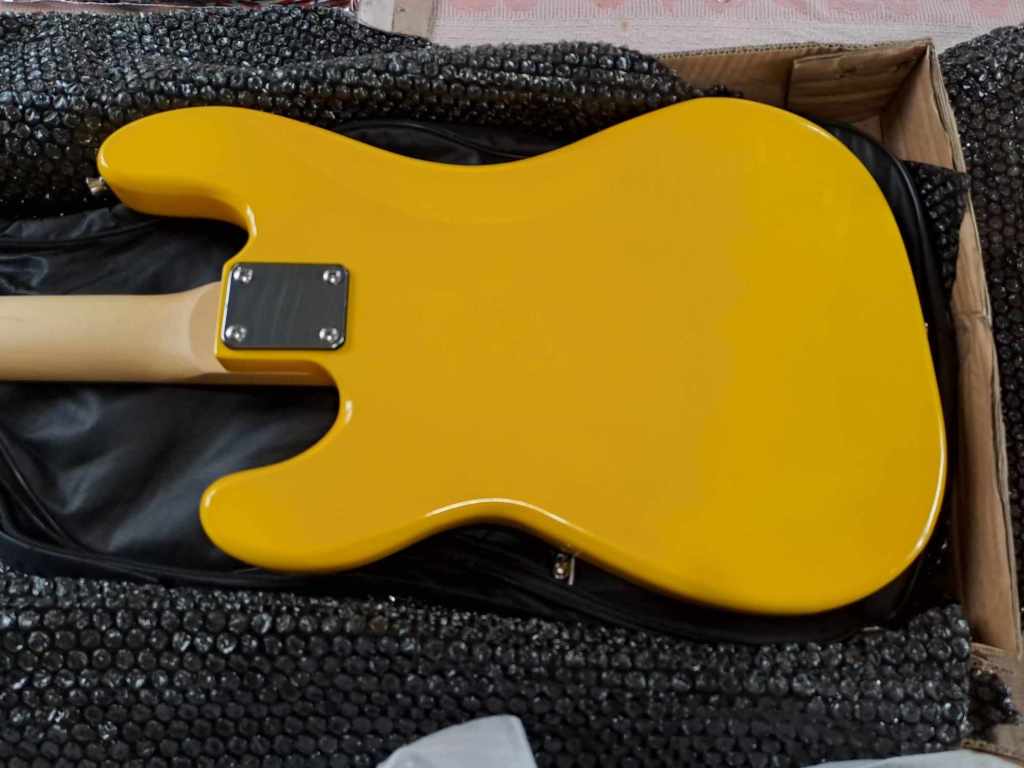

This bass had a split-coil humbucking pickup but one of them lacked the springs to allow for pickup height adjustment and hold them in place (we had an extra pair and installed it later on).
Build and Aesthetic appeal
Very well then, so eyeballing the neck and checking whether this one will play well out of the box, the nut seems properly fitted but action was a bit high, this one definitely requires a setup.
First impressions on appearance, its yellow painted body had a more old-school style look with its satin like finish and its guitar neck thin layer coat tended to lean towards a matte and flat finish.2
As far as we can remember, according to the specs, the bass had a basswood body, maple neck and rosewood fingerboard. And we seem to find the bass’ body weight a little lighter than the neck.
We estimated the guitar weight at maybe around 7 pounds or just slightly well over 3 kilograms, this is indeed a lightweight bass.
And as a Fender Precision Bass knockoff, although the bass’ body weighed a little lighter than the neck, it wasn’t neck-heavy at all.
Setup
Basic setup is essential to make sure one will be getting the best out of their bass guitar. All new bass guitars benefit from a setup, be it a cheapo or an expensive one.
Tweaking and dialing in a new bass guitar by giving it a good setup can mean the difference between making any bass sound good, making it playable, and perhaps make it achieve its full potential.
Basic bass setup may include adjusting the truss rod for neck relief, string height for action and checking for buzzes, adjusting pickup heights, and intonation, so here we go.
Although we are no expert or a professional guitar tech, we definitely picked up a thing or two about guitar setup through self-thought and experience about this over the years.
Regardless of what make the bass is, a number of bass players generally prefer a low action and a straighter neck for ease and comfort of playing.
Measuring scale length, 431.5 mm or 16.98 inches at the 12th fret, a long scale. Visually inspecting the neck, it was a bit straight, and seems to have a compound neck radius of 12” at the headstock and 16” at the neck heel as it reaches the body.
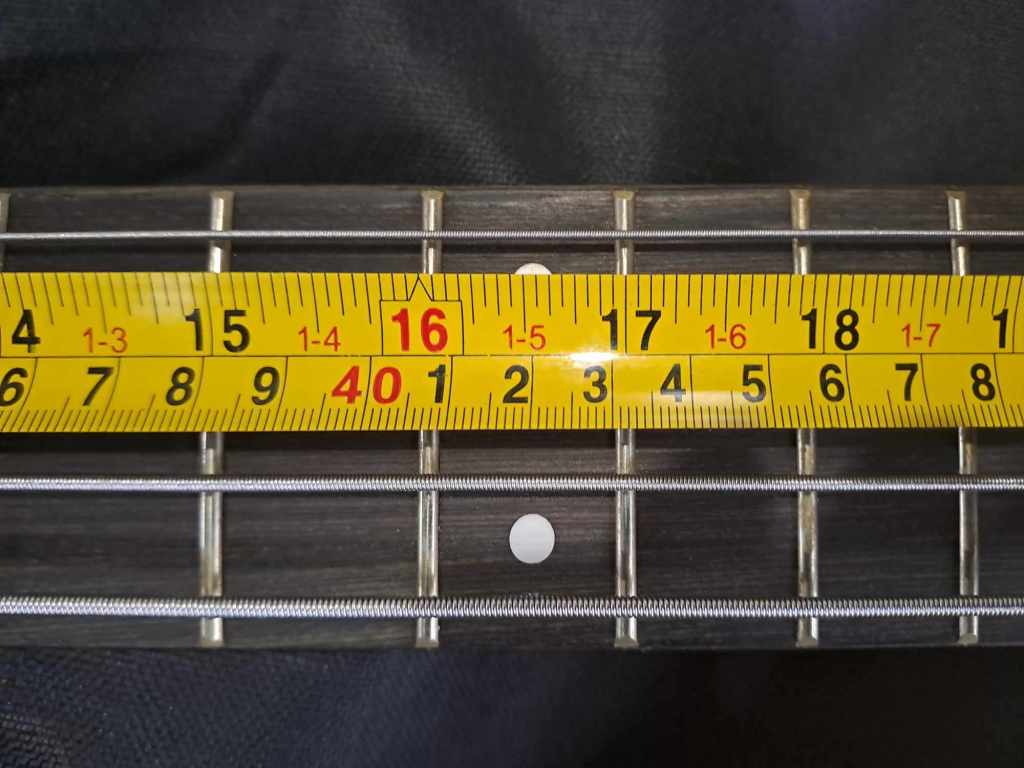
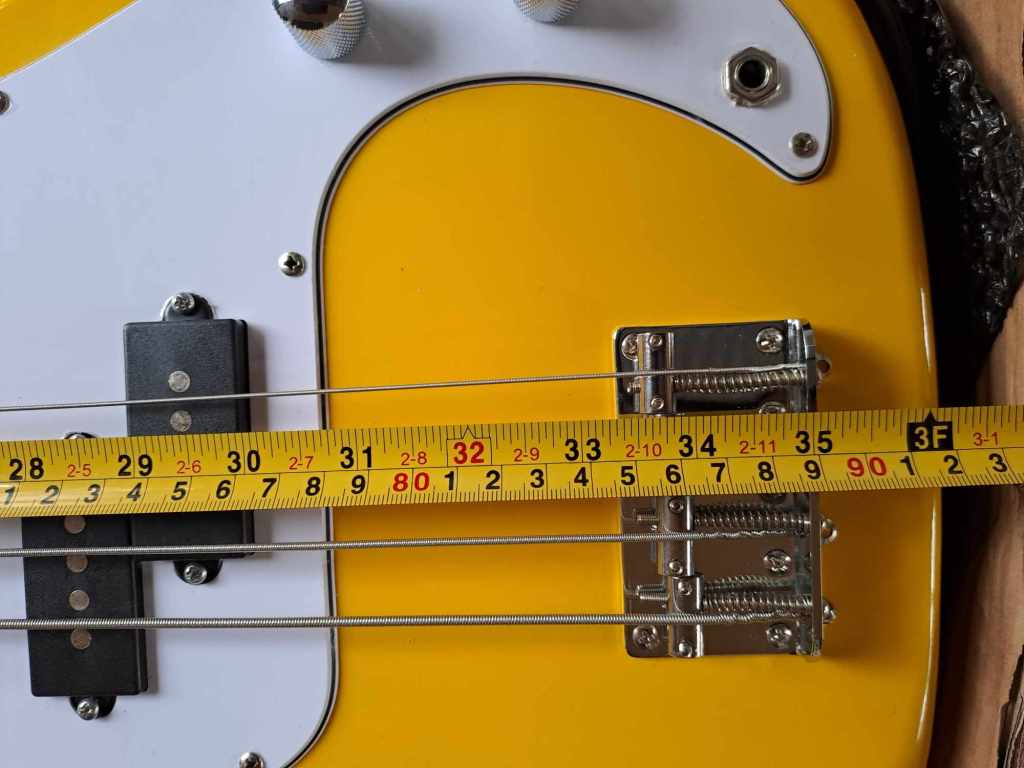
Neck relief was all right but we will just try to see later once we tune the strings to pitch, and check relief again, to see if we need to make adjustments on the truss rod.
Rudimentary
This bass’ action was high out of the box, so we proceeded to bottom out the individual bridge saddles, tuned and checked action again, still very high.
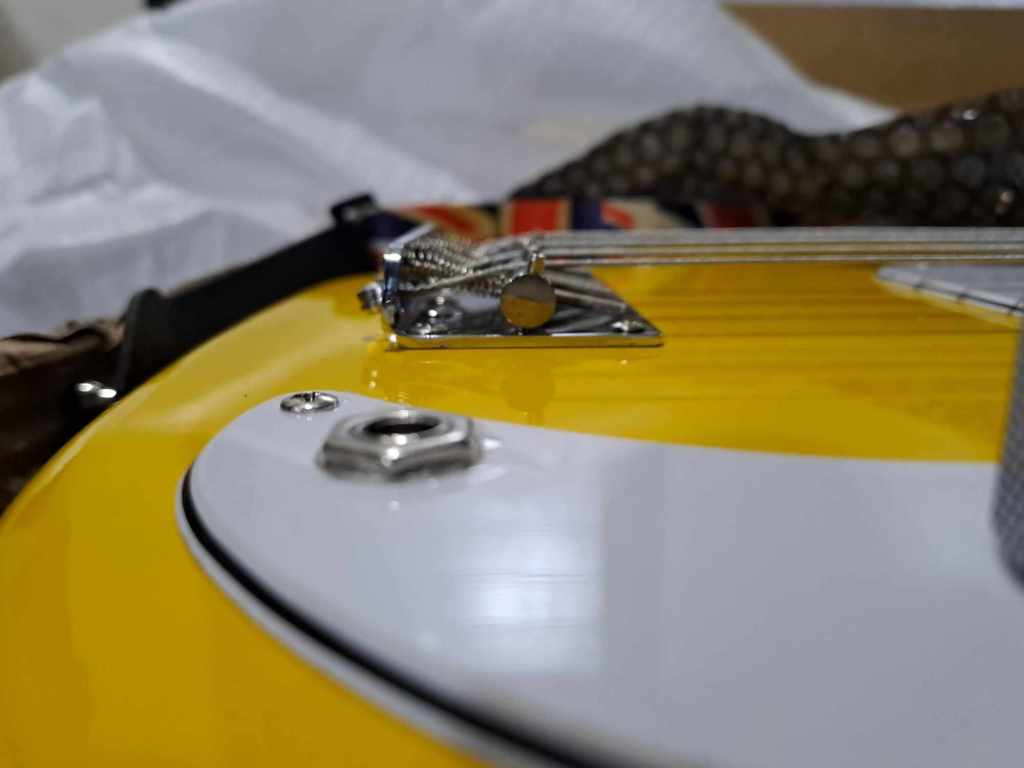
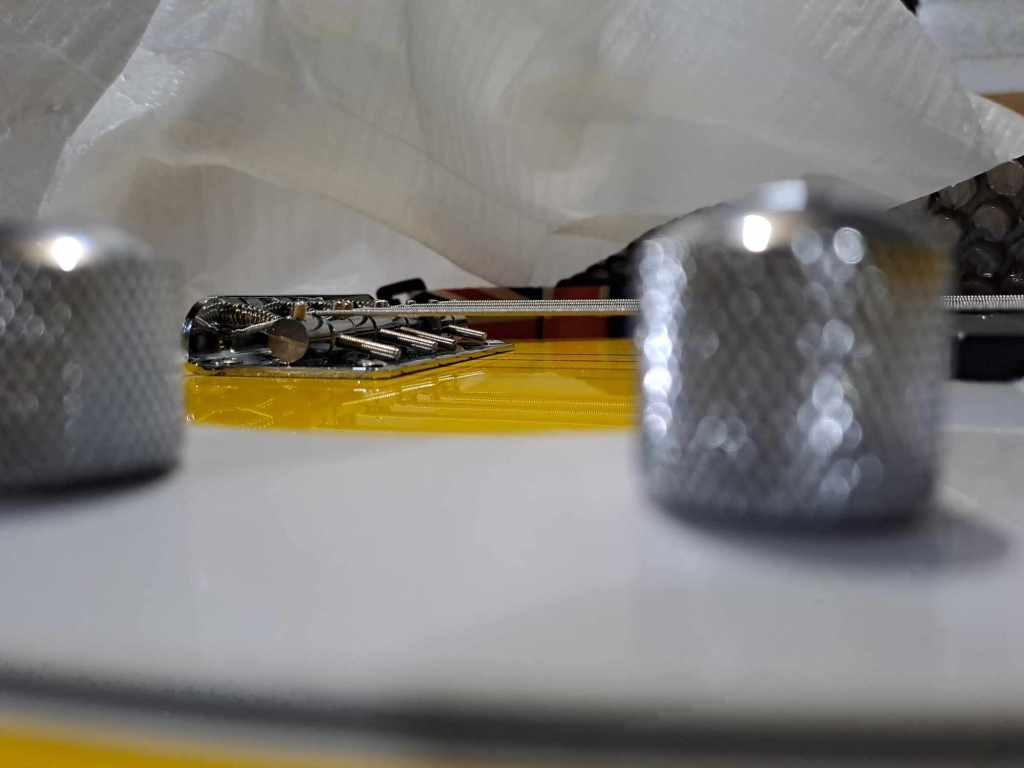
Since the action is still too high, with the bridge saddles all the way down and bottomed out, with no more room for adjustment, for adjusting any lower was just empirically impossible.
This leads us to our next step and course of action to fix this, and try resorting to a guitar’s high-action’s most common cure, shimming the neck.
But shimming isn’t without its drawbacks, bridge saddles may also need to be adjusted accordingly, with no straight edge, using only visual inspection for relief, we’ll just have to rely on checking for buzzes then.
So we proceeded in removing the bolt-on neck to check its neck pocket, and to check our options whether we needed to shim the body end or the neck end of the pocket.
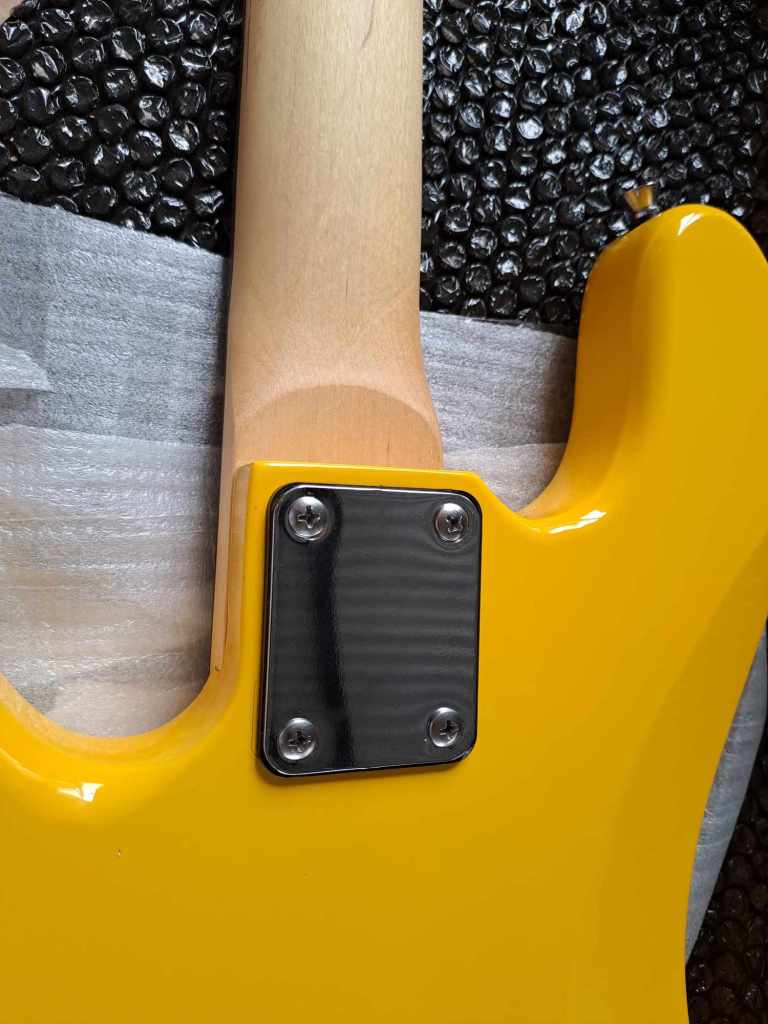
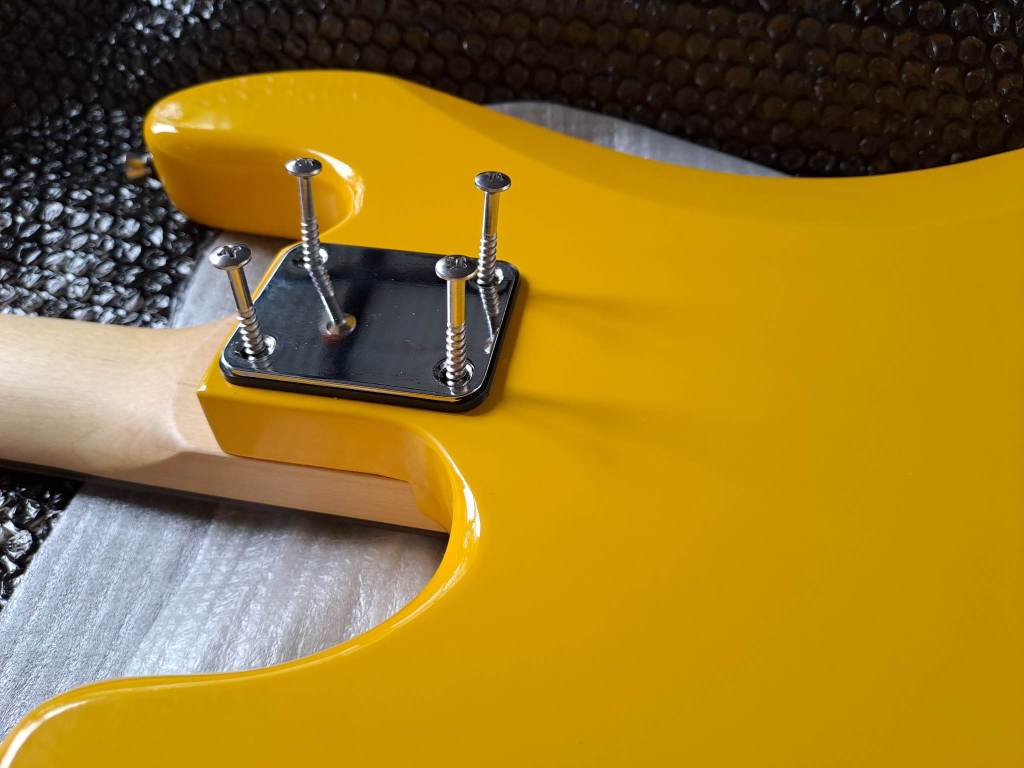
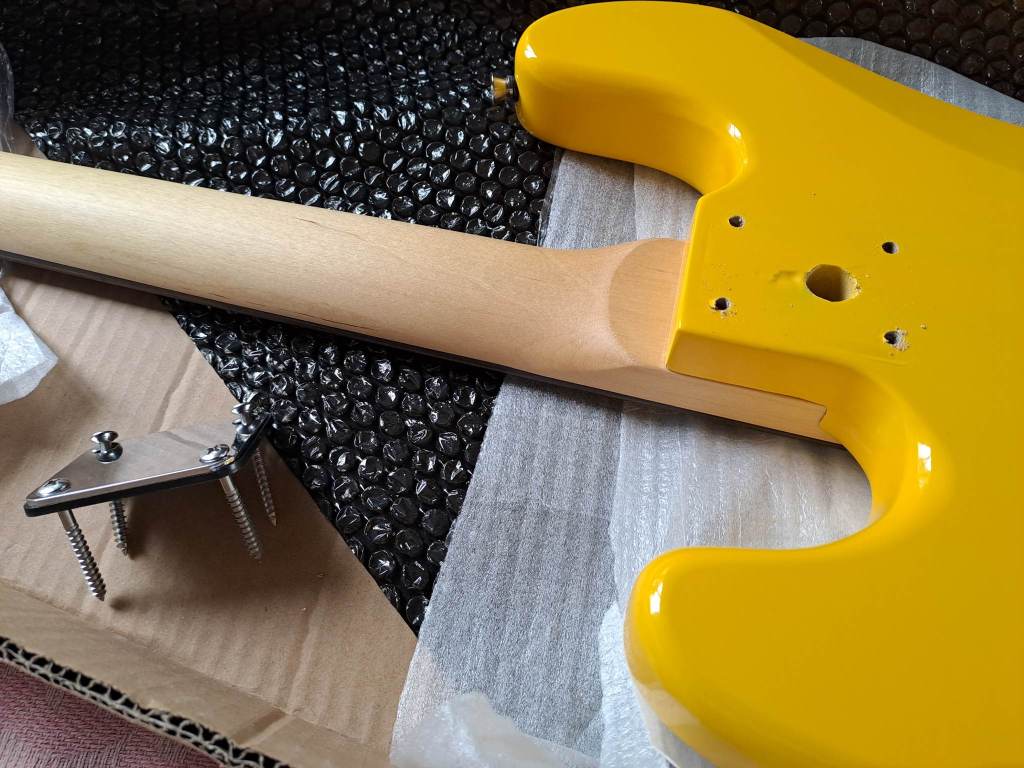
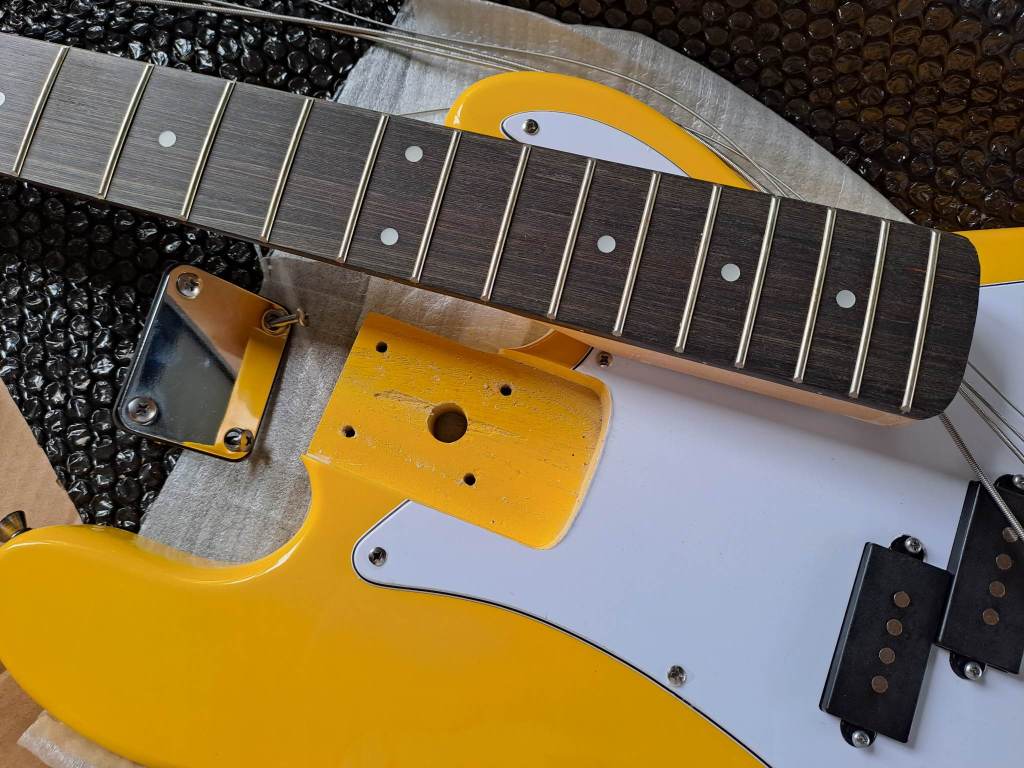
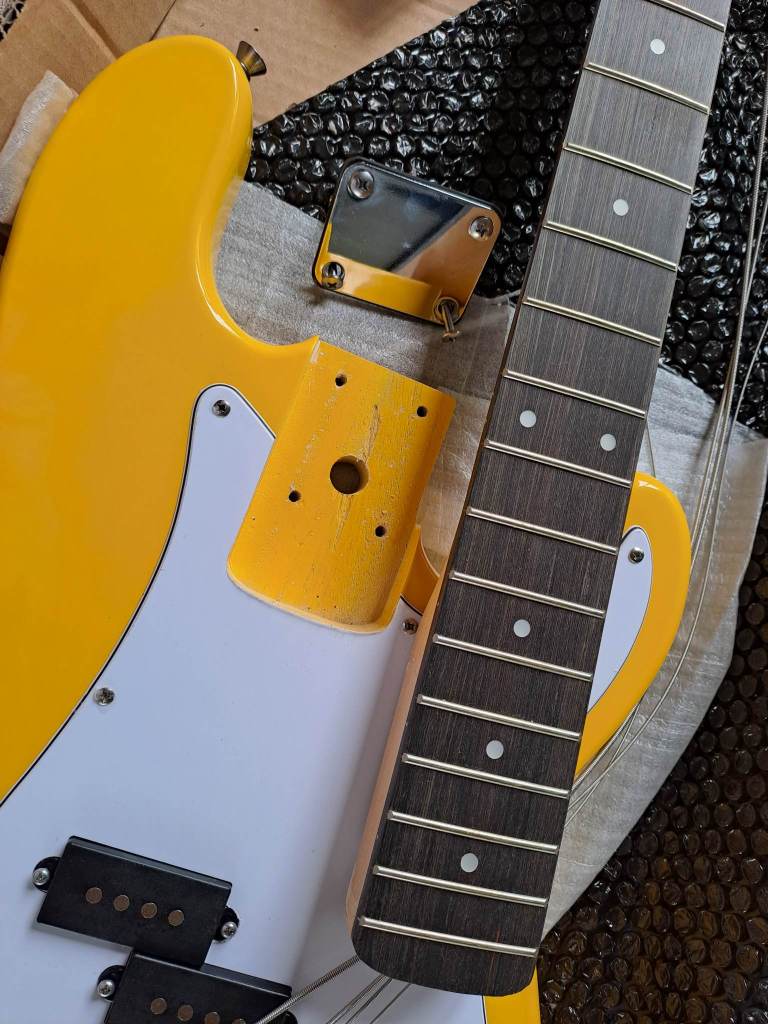
Checking the neck pocket showed a bit of telltale sign that it wasn’t routed deep enough, and as routing it out or lowering the entire bridge was not physically possible because we didn’t have any router, shimming was the only way to go.
Using a strip of sandpaper on the full width of the neck heel, about ½ inch wide, usually does the trick. But we decided to fashion out a plastic shim we cut out and trimmed with a scissor from an empty plastic 1.5 liter Coke bottle.
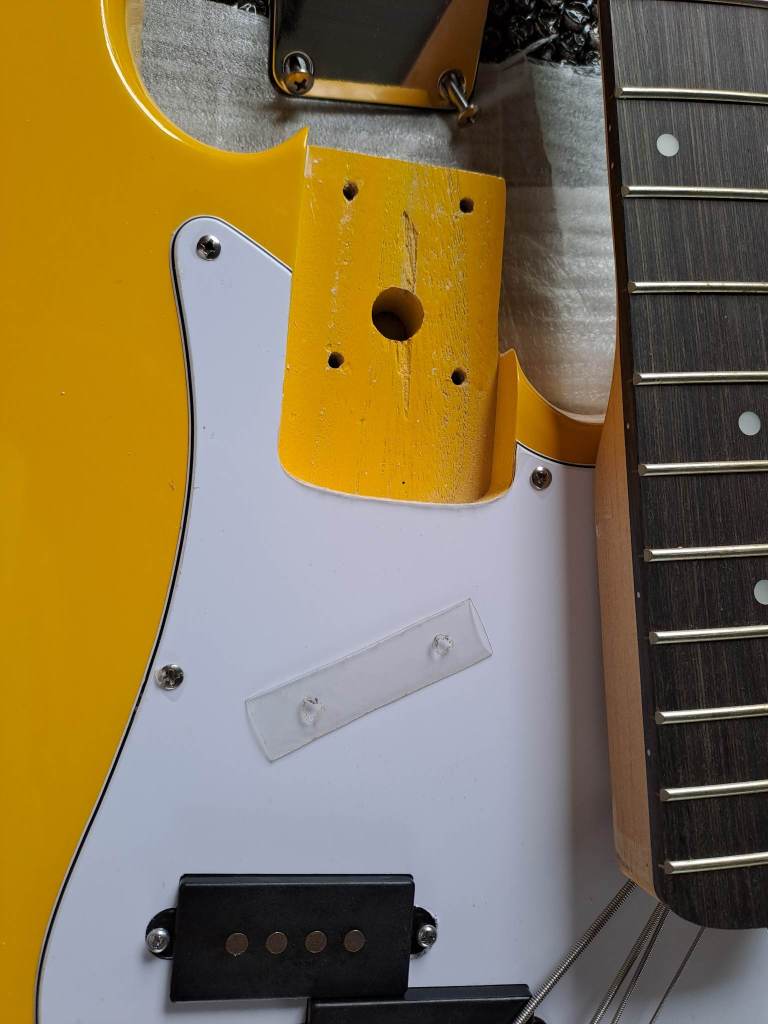
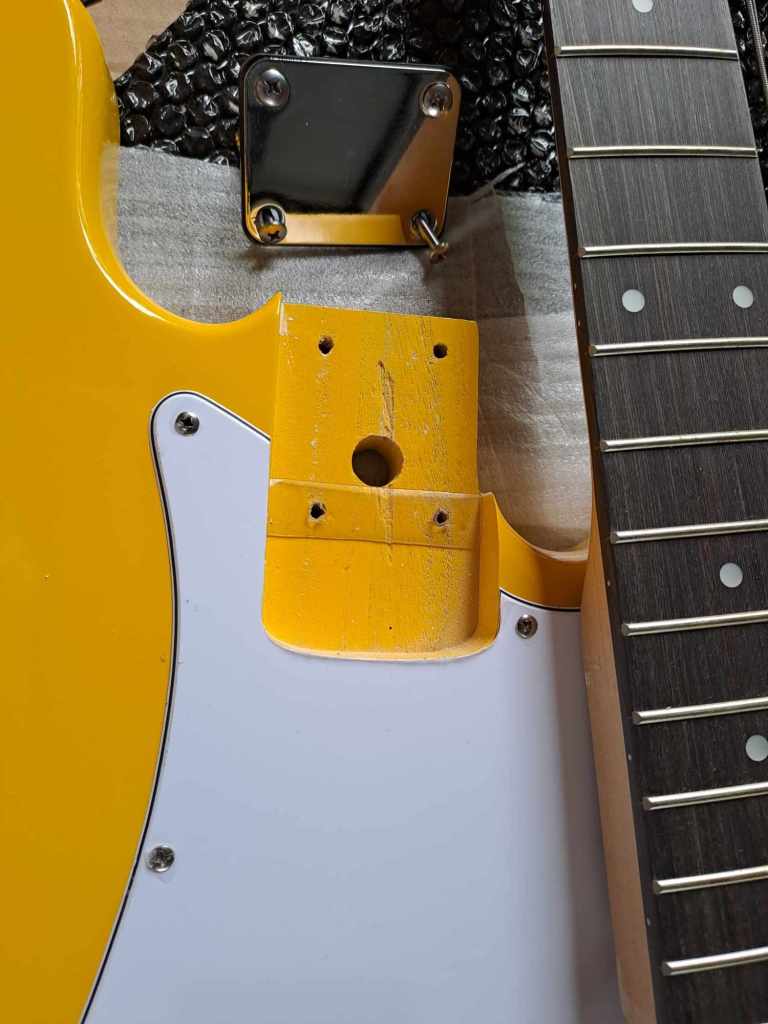
Lucky
After determining to put the shim at the body end of the pocket, we then marked the plastic shim with a pen, hammered a nail to make two small holes at the spot where the two bottom neck screws will pass, then trimmed the holes further to make them bigger.
So we placed the shim, bolted and re-attached the neck, re-stringed, adjusted bridge saddles based on our pre-set scale length measurement, tuned to pitch then checked again.
And upon checking the action, we now seem to have a very low-action, visually inspecting neck – got a tad of relief, then measured action on the 12th fret for each string with a rule.
Astonishingly, the figures we got for individual string action were around 1.5 mm or 4/64s of an inch. Woah, we didn’t expect that! But wait, we haven’t checked which strings and frets are buzzing yet, so we did.
After carefully checking each string and each fret, starting from the top 4E from the lower frets up to the higher frets, moved to 3A, then 2D, hitting a buzz at the 8th fret, then finishing with the 1G.
With the bass playing cleanly elsewhere, we’ve isolated that little fret buzz at the 8th fret of the 2D string. With an uneven fret there and with no way of leveling the fret for we didn’t have any fretbar or fret rocker or the right tool for the job.
We just adjusted the saddle height and raised it a bit to compensate until the string no longer catch the top of the next higher fret and finally eliminated that single fret buzz… best we can do. So we measured 2D’s action again at the 12th fret and this time we came up with 1.9 mm or 5/64s of an inch. Guess, this will do then.
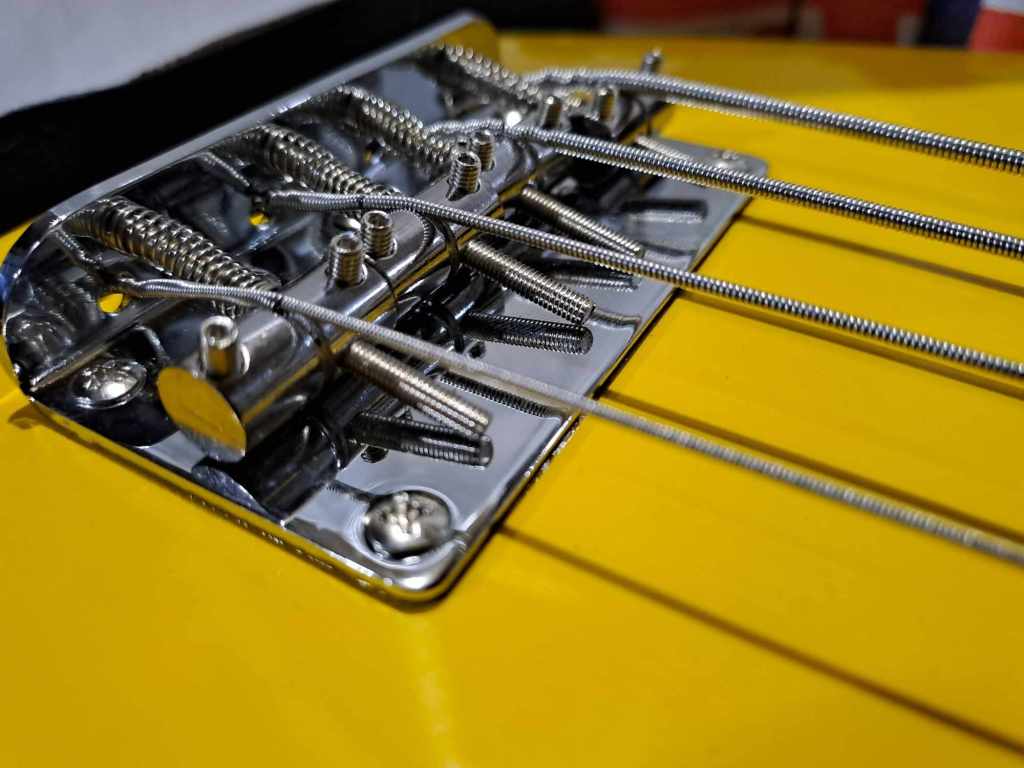
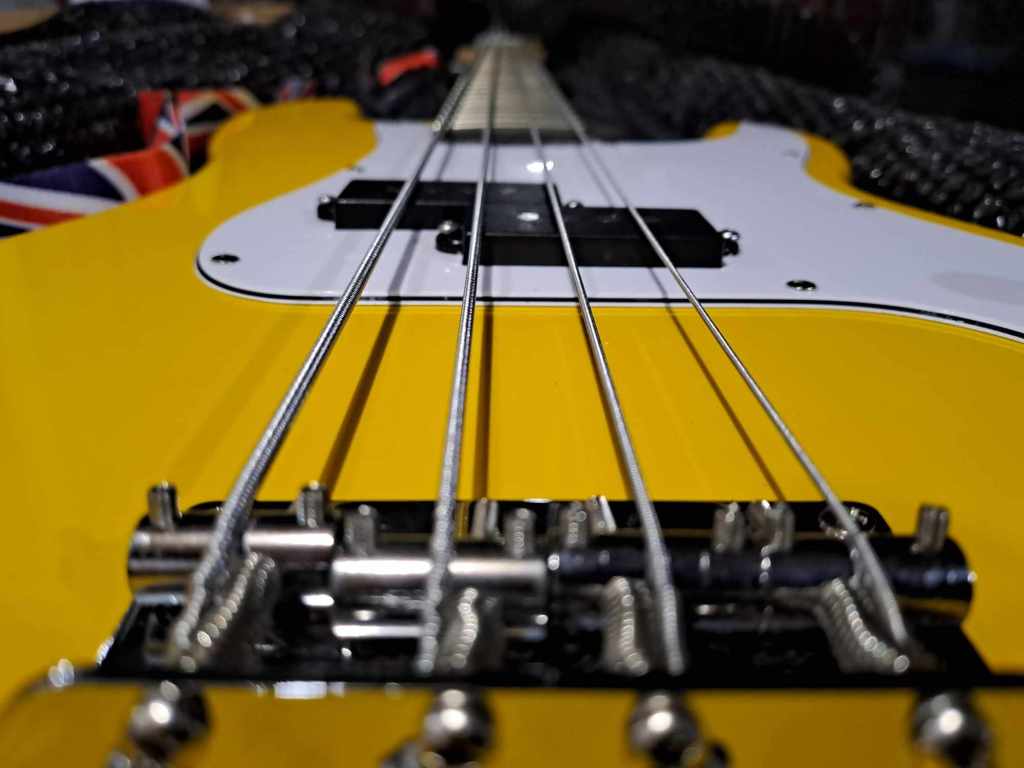
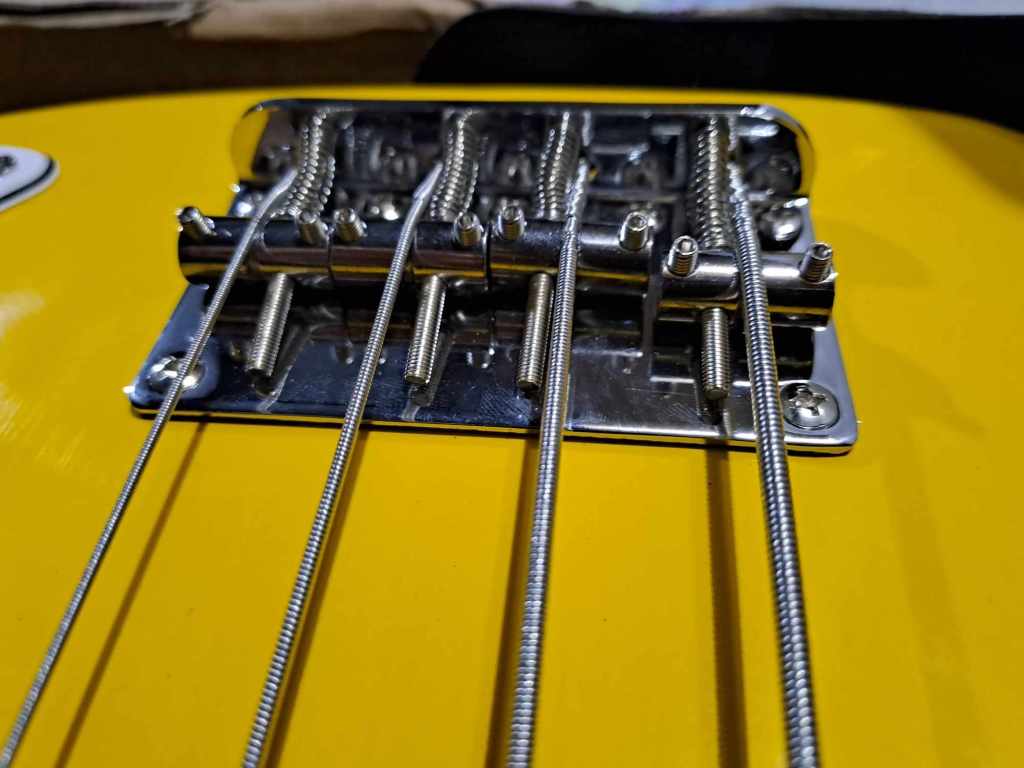
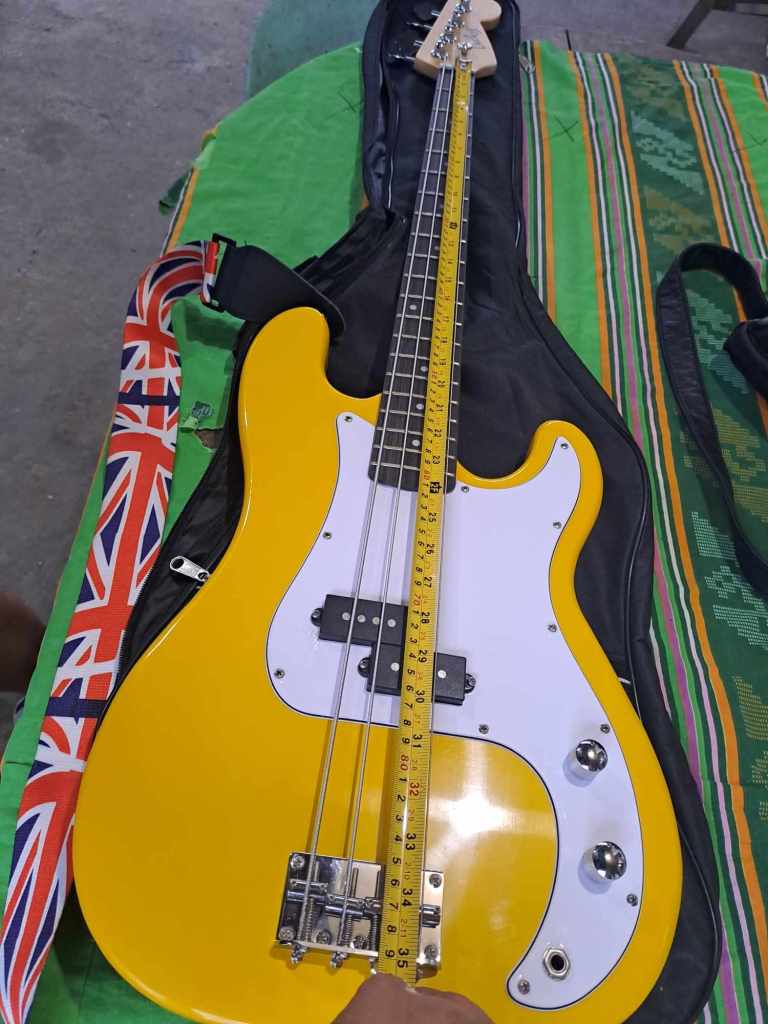
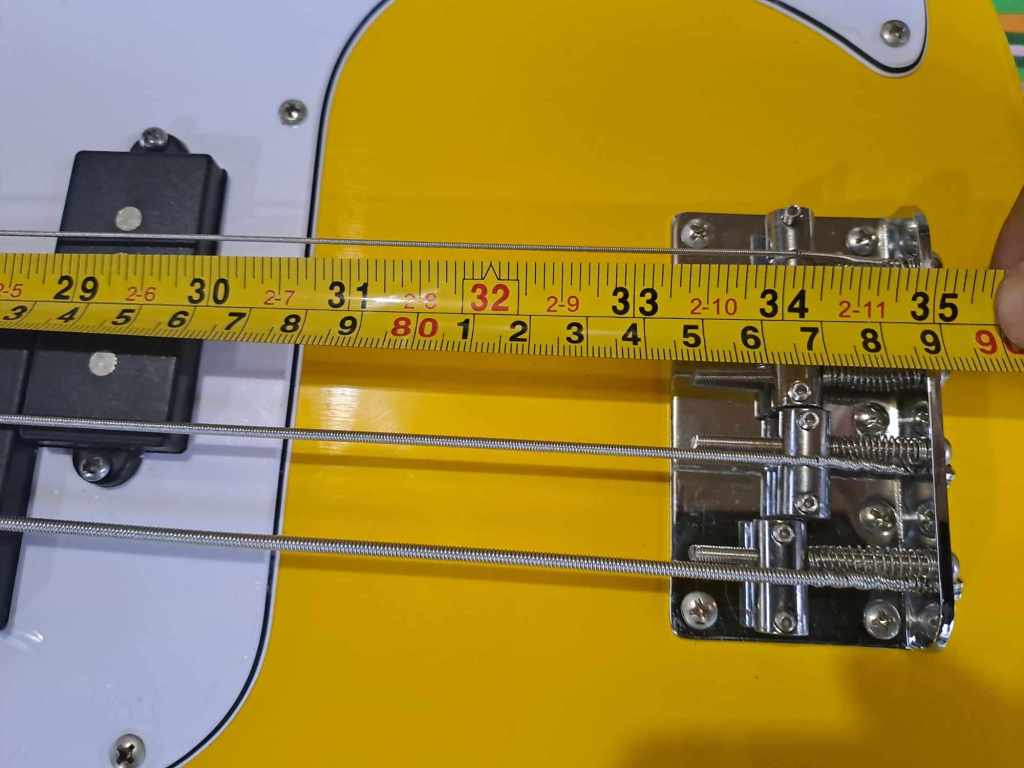
Awesome Playability
With the bass’ current setup, with the bridge saddles bottomed out except for 2D itsy-bitsy raised, we were thinking the bridge might play a factor in the strings tension, but let’s intonate and check.
And after the bass was intonated, tuned up to the proper pitch, the strings felt fairly tight against the bass, was easy to fret, and gentle on the finger pads producing a clear and clean tone (without that buzz). All right!
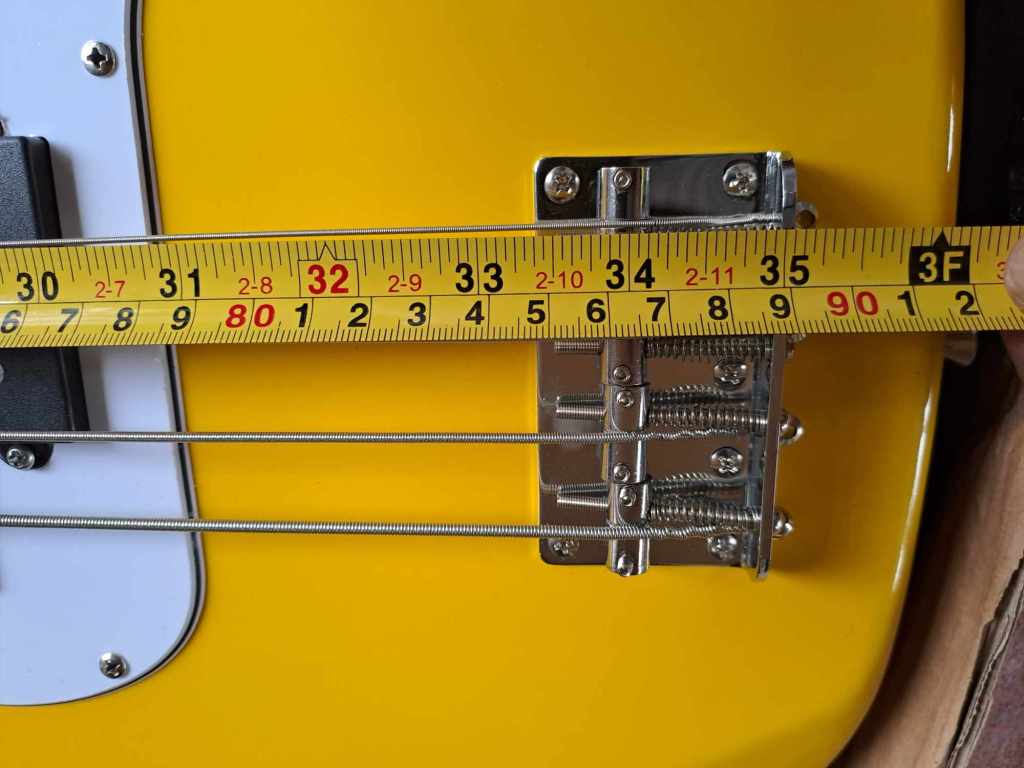
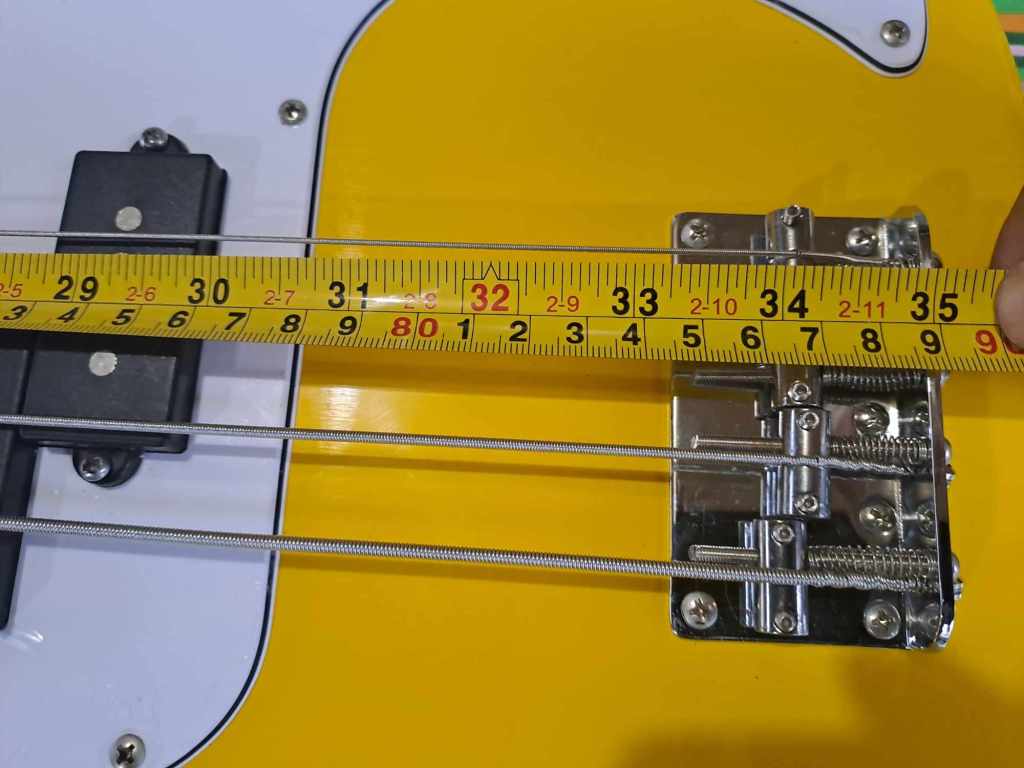
Although the neck pocket seemed too low, and bridge saddles bottomed out, with that single piece of plastic shim we placed at the body end of the pocket to give that slight change in neck pitch.
We were able to finally setup the bass. And about the bass’ sounds character, it is still slightly similar to the specific sound in character of P-basses.
We usually do our own setup, we are not an expert or a professional guitar tech, but we luckily managed to come up with this kind of setup, of getting awesome playability on a cheapo bass guitar.
Rarely
The bass was now all good, this bass had no sharp fret ends on both sides of the neck. However, playing and sliding high on the fretboard though we manage to encounter one hitch.
We found out that the 14th fret had a sharp fret crown (not on the fret ends), that is, a sharp edge on top of the 14th fret, and the fret felt like a box cutter’s blade, felt like it slightly shaves the fingertips when sliding up, as the fingers comes in contact, as it passes on top of the fret.
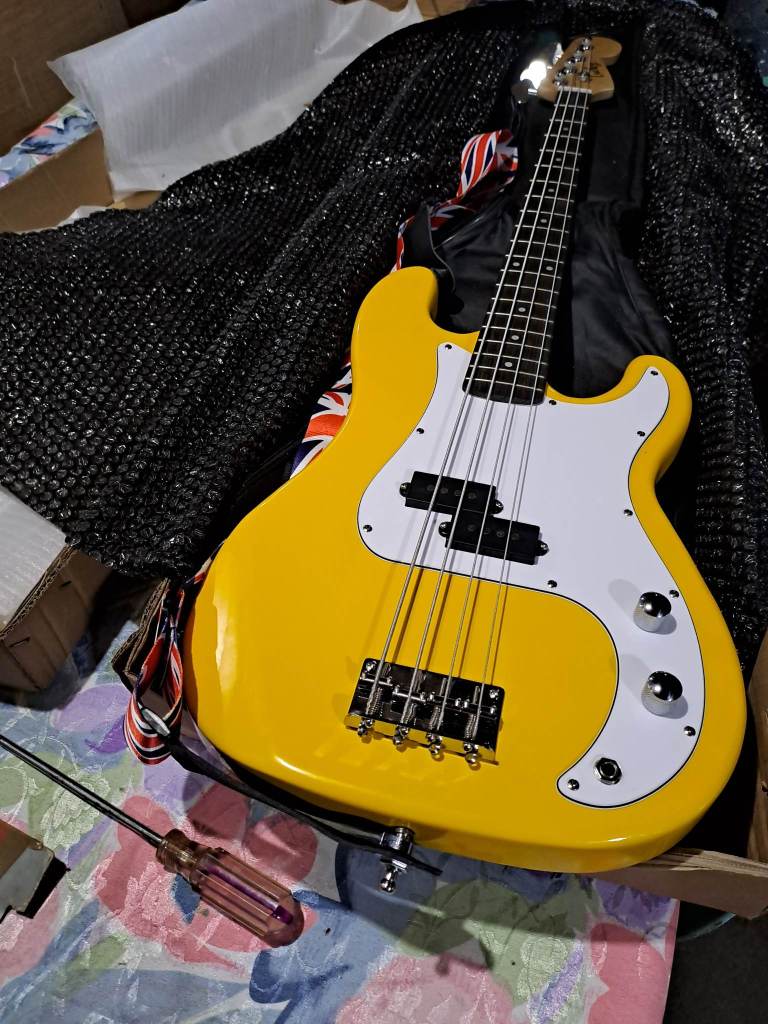
And since we didn’t have no crowning file, we couldn’t break or file the corner on the top, and recrowning was no option, got no crowning and dressing files, no dead-blow hammers, no fret-bending jigs.
A sharpie maybe, but we also have no fret leveling tools, no 16” leveling beam or a straight edge. Sandpaper? Nah, we’ll just keep that fret in mind when playing. Anyway, we can still play melodies and chords using only the first five to seventh fret – the money bracket.
Another thing about the bass too is the output jack, it’s in front, and it’s just how P-basses comes. But it’s only that, the jack is in a plastic pickguard and every time you remove the cable, you just have to press down on the pickguard beside the jack to hold it down for it feels like it’s just soft and pliable, and might just get busted in time.
Value vs Price
So, are buying cheapo guitars worth the money? This will all actually depend on the item and ones personal preferences.
Generally speaking, it may be worth to invest in a more expensive bass if it will last longer and save you money in the long run.
However, if the cheapo basses will meet your needs just as well, it may be more cost-effective for one to go with that option.
It’s still important though to consider the cost you might be spending in the future, as well as considering additional features or benefits that more expensive basses may offer.

Eventually, you will just have to decide base on your budget and priorities. You have to ask yourself first, what do you need the bass for, before trying to decide, to shell-out and spend a lot more money to buy that expensive bass.
Cheapo basses are likely to be made of shoddy, lower quality materials, or built using less quality work to cut costs and more, and they might be unplayable.
Not literally though, for you may still be able to play it, but if you’ll be using one with a very high action, and you don’t know how to make the necessary adjustments, your fingers may really get sore after.
Because cheapo guitars usually have some issues like playability and high action. And constant physical strain might become discouraging or hinder your progress in time.
For it is really difficult to learn on it if it has intonation and playability issues. But on the bright side, you can always take it to a luthier and get it setup, to make it more playable, to improve or enhance it, for their expertise can mean a big difference (but that would mean additional spending).
Getting what you pay for
So, is it actually still worth buying a cheapo bass? It still depends on what you are going to use it for, for it might just end up gathering dust sitting in the corner a month after you buy it.
Buying cheapo basses may be good if you’re just starting out but it is not without its pros and cons. And there’s another downside to it if it will not be properly setup.
For a good setup is crucial, because without it, this might lead to poor playing or maybe lead to picking up those common bad habits that may become hard to unlearn in the future.
One thing to remember is that a higher price may not always indicate better quality, and a low price may not always mean bad quality.
Buying cheapos may not always be buying value, but it all depends on where one is at, for a low price can either indicate good value or low quality, or a high price can either imply a poor value or high quality.3
The correlation between value and quality may not always be accurate,4 and although being low priced doesn’t always mean a good or high value, who knows?
It could be, for if it is well made, then it is well made. And if it’s not, and if you have the know-how, you can always try and make it worthy, and make it work for you by giving it a good setup. And you will always have the option to upgrade it later.
In a nutshell, getting any musical instrument all depends on personal preferences, the budget, or on what you’re planning on using it for. For when it comes to musical instruments you sometimes always get what you pay for.
And although it is usually best to invest a little more on expensive ones if you have high-quality in mind. Buying a cheapo and giving it a good setup can sometimes make it sound and play pretty good, and you might just be getting your money’s worth after all.

REFERENCES
1. Surviving supply chain integration. (2000). In National Academies Press eBooks. https: //doi(dot)org/10.17226/6369
2. Potts, J. (2023). Satin Finish Guitar vs. Gloss – Which One Should You Pick? Music Strive. https: //musicstrive(dot)com/satin-vs-gloss-guitars/
3. High quality or poor value: When do consumers make different conclusions about the same product? (2012, October 12). ScienceDaily. https: //www(dot)sciencedaily(dot)com/releases/2012/10/121022121908.htm#:~:text=FULL%20STORY-,Depending%20on%20which%20naive%20theory%20consumers%20use%2C%20a%20low%20price,the%20Journal%20of%20Consumer%20Research.
4. Sun, A. (n.d.). Why Quality Over Price is Always the Sustainable Choice? www(dot)linkedin(dot)com. https: //www(dot)linkedin(dot)com/pulse/why-quality-over-price-always-sustainable-choice-amy-sun#:~:text=The%20correlation%20between%20quality%20and,product%20to%20make%20this%20determination.



